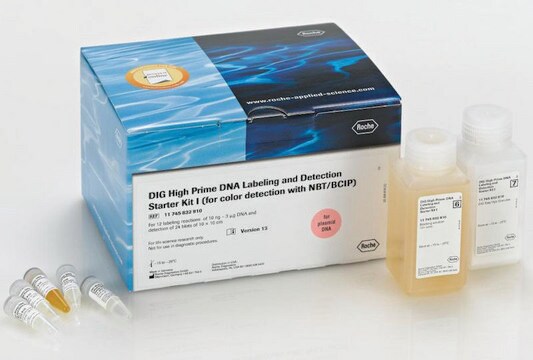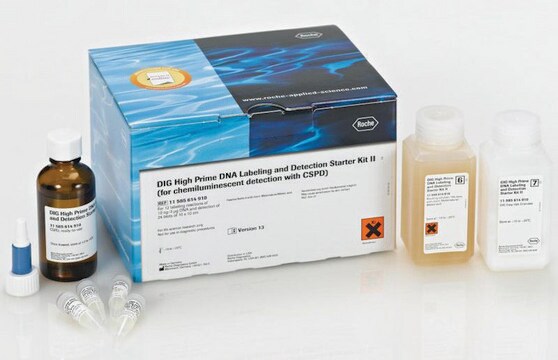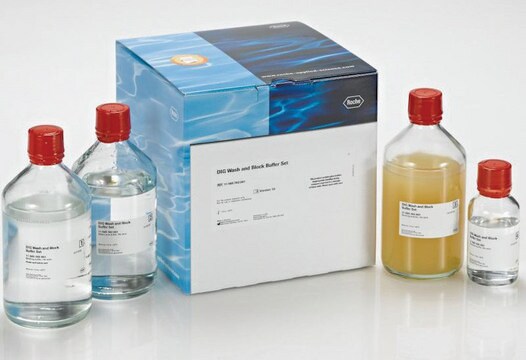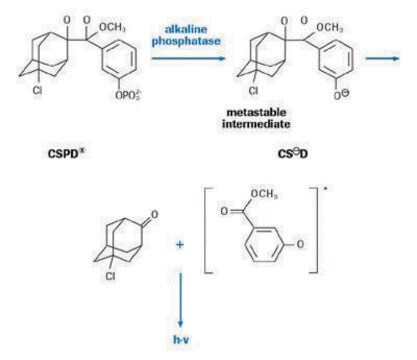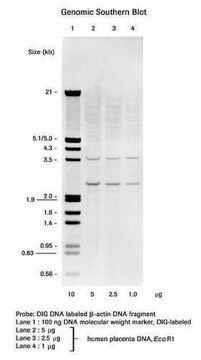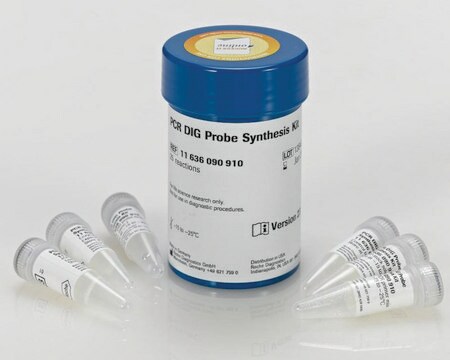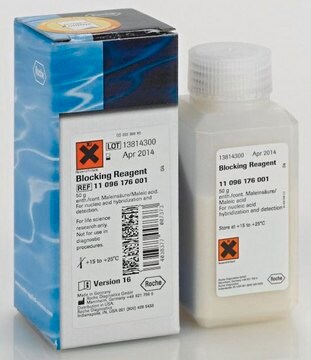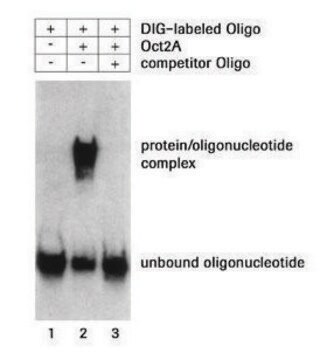11175041910
Roche
DIG Nucleic Acid Detection Kit
sufficient for 40 blots (10 cm x 10 cm each), kit of 1 (5 components), suitable for hybridization, suitable for Northern blotting
Synonyme(s) :
DIG system
About This Item
Produits recommandés
Utilisation
sufficient for 40 blots (10 cm x 10 cm each)
Niveau de qualité
Conditionnement
kit of 1 (5 components)
Fabricant/nom de marque
Roche
Caractéristiques du produit alternatif plus écologique
Designing Safer Chemicals
Learn more about the Principles of Green Chemistry.
sustainability
Greener Alternative Product
Technique(s)
Northern blotting: suitable
Southern blotting: suitable
hybridization: suitable
Autre catégorie plus écologique
, Aligned
Température de stockage
−20°C
Description générale
Application
- Southern blots
- Northern blots
- Other nucleic acid blotting applications
- In situ hybridization applications
- Southern blots
- Northern blots
- Other nucleic acid blotting applications
- In situ hybridization applications
Caractéristiques et avantages
Conditionnement
Principe
Notes préparatoires
Working concentration of conjugate depends on application and substrate.
Storage conditions (working solution):
- Anti-Digoxigenin-AP Conjugate (vial 3): 2 to 8 °C, it is stable for 12 months at this temperature
- NBT/BCIP (vial 4): 2 to 8 °C, stable
Note: During shipment of the kit on dry ice, a precipitate may occur which is dissolved by briefly warming to 37 °C - The blocking reagent (vial 5) is stable for 36 months and can be stored dry at 4 to 8 °C.
- Autoclaved stock solution can be stored for several days to a week either unopened at 15 to 25 °C or at 4 to 8 °C after opening. Alternatively, it can be stored in aliquots at -15 to -25 °C for up to 6 months.
Composants de kit seuls
- DIG-labeled Control DNA 5 µg/ml
- DNA Dilution Buffer, [50 μg/ml] fish sperm DNA
- Anti-Digoxigenin-AP Conjugate antibody 750 U/ml
- NBT/BCIP, 50x stock solution 50x concentrated
- Blocking Reagent
Code de la classe de stockage
11 - Combustible Solids
Classe de danger pour l'eau (WGK)
WGK 3
Point d'éclair (°F)
does not flashNot applicable
Point d'éclair (°C)
does not flashNot applicable
Certificats d'analyse (COA)
Recherchez un Certificats d'analyse (COA) en saisissant le numéro de lot du produit. Les numéros de lot figurent sur l'étiquette du produit après les mots "Lot" ou "Batch".
Déjà en possession de ce produit ?
Retrouvez la documentation relative aux produits que vous avez récemment achetés dans la Bibliothèque de documents.
Les clients ont également consulté
Articles
Digoxigenin (DIG) labeling methods and kits for DNA and RNA DIG probes, random primed DNA labeling, nick translation labeling, 5’ and 3’ oligonucleotide end-labeling.
Notre équipe de scientifiques dispose d'une expérience dans tous les secteurs de la recherche, notamment en sciences de la vie, science des matériaux, synthèse chimique, chromatographie, analyse et dans de nombreux autres domaines..
Contacter notre Service technique